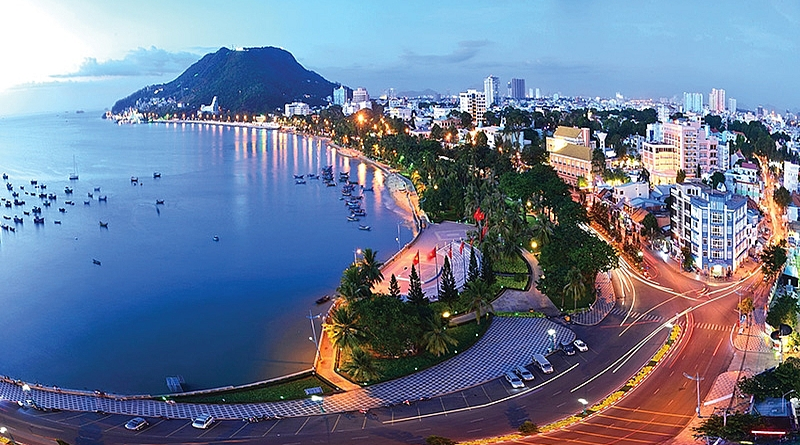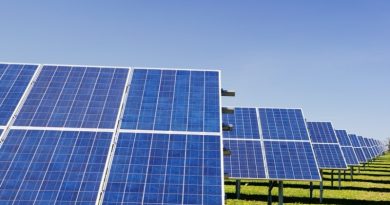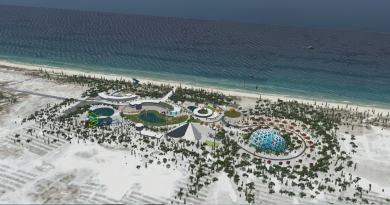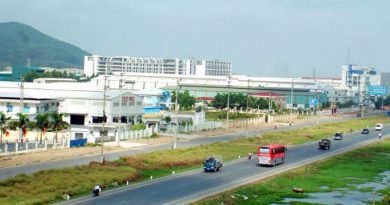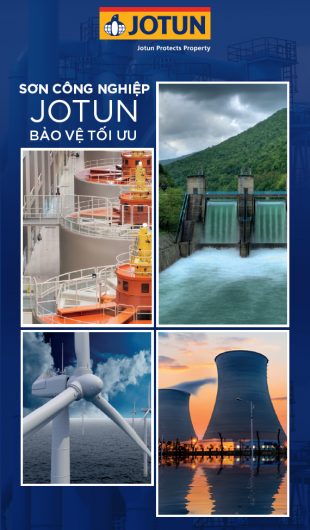Ba Ria-Vung Tau gears towards more inclusive development
Taking advantage of its abundant natural resources, as well as the robust petroleum sector and seaport development, the southern province of Ba Ria-Vung Tau is deploying a raft of measures with the target of growing into a dynamic zone with sustainable development.
Ba Ria-Vung Tau Department of Construction has proposed revising the planning scheme of functional zones in Go Gang Island, a popular venue for domestic and international visitors located in Long Son commune, about three kilometres south-west of Vung Tau city.
Boasting scenic beauty and a favourable location, Go Gang Island is regarded as a launching pad to spur the development of a new economic zone in the province.
If the proposal comes to fruition, the island would consist of eight different subzones over nearly 1,400 hectares for an estimated population of around 65,000, including housing and functional complexes, public spaces, green trees and parks, water landscaping, technical infrastructure, an entertainment site, airport and associated services, and a local fishing centre. The land earmarked for urban construction is set at nearly 800 hectares, accounting for 57 per cent of the total available area.
When Go Gang Airport becomes operational, about 200ha would be allocated to the development of new urban areas in the province. Alongside this, the investors have expressed a desire to engage in two major new urban development projects. The first, covering 150ha of the existing Vung Tau Airport space, will consist of an urban complex, a central park, mixed trade services and transshipment centre, and a finance and technology centre.
The second project, 270ha in Vung Tau city’s Ward 12, is set to consist of a complete 60ha eco resort, a 20ha plot for building a trade centre and office complex, a 15ha large-scale trade centre, a 25ha marina urban area, a sports centre over 15ha, 30ha of low-rise commercial buildings, and a new residential area attached to an existing village of over 60ha.
Another measure relates to the province’s commitment to have in place a seamless transport infrastructure system. Accordingly, as well as expanding aviation transport, Ba Ria-Vung Tau is accelerating the pace of local road projects, particularly constructing Bien Hoa-Vung Tau Expressway.
National Highway 51 has been overloaded in recent years. This is attributable to traffic volume surging more than 30 per cent over the forecast level, plus rapid urbanisation along the road.
This bottleneck could be resolved by ramping up the progress of Bien Hoa-Vung Tau Expressway. The province’s relevant agencies are stepping up efforts to be able to get the project off the ground in the near future.
The highway project is set to kickstart construction in 2021 and reach completion two years later, from there facilitating travel between the province and other localities in the southern key economic zone.
Besides the highway project, the province is seeking approval for a rail route to the Cai Mep-Thi Vai port complex under the public-private partnership model.

The province is also working on a number of other transport infrastructure projects, such as Phuoc An Bridge, Long Son-Cai Mep Road, and many more.
This year, the estimated cost of implementing the province’s key transport projects comes to around VND912 billion ($39.6 million).
Ba Ria-Vung Tau also plans to develop the local tourism sector by capitalising on its bountiful natural resources, such as its 300km-plus coastline and the Con Dao archipelago.
If the province’s tourism development strategy goes to plan, by 2025 it would welcome 9.6 million visitors (including 1.4 million foreigners), an 11-13 per cent rise against the present time. The sector aims to secure VND31 trillion ($1.34 billion) in revenue by 2025 with an annual growth of 30-35 per cent during the period. The scheme includes a list of projects and programmes given priority for investment to 2025, such as a tourism-oriented urban area in Vung Tau city, two resorts (at Con Dao and Long Hai-Phuoc Hai), and implementing four tourism development programmes on human resources development and training; promotion of local tourism brands; preservation, conservation, and development of local resources, and development of key tourism infrastructure.
Source:VIR




